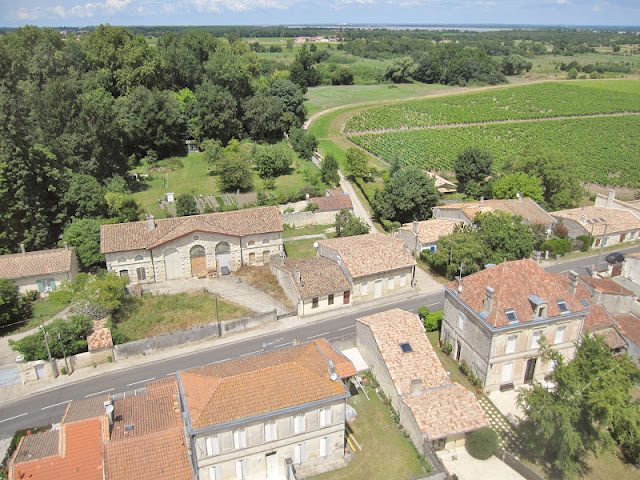The tall steeple of Saint-Seurin church is one of the most outstanding features of the Médoc village of Lamarque, best-known as the left-bank departure and arrival point of the small ferries that criss-cross the Gironde estuary (the right-bank counterpart being the town of Blaye).
The church itself was built over a 40-year period between 1830 and 1870. Its steeple was topped off by a dome which, come 1968, was in a critical state of disrepair. The dome was dismantled and the steeple remained in its decapitated form for a number of years.
At the turn of the millennium, the Lamarque village council launched a project to rebuild the dome. Municipal funds were boosted by subsidies from the Gironde département and a grant from the European Union, within the framework of the Leader+ programme aimed at promoting the development of rural areas.
Throughout 2003 and 2004, craftsmen from two local companies, the carpenters
Pierre-Jean Juste and roofing specialists
Fetis, set about delivering a new staircase and dome that would not only complete the church’s silhouette but that would also be a destination in itself, providing visitors with a unique view over the village of Lamarque, the surrounding vineyards (this is Haut-Médoc territory, wine-lovers) and countryside, and out towards the Gironde estuary.
The view has to be earned though. To reach the 39-metre-high vantage point, there are 189 wooden steps to climb. In all, seven landings break up the ascent, and each section of the staircase boasts a different shape and design. According to guide Josette Nonier, the chops and changes in the meandering and winding route of the staircase were inspired by the
labyrinth scene which takes place in a library in Umberto Eco’s “The Name of the Rose”.
The staircase also passes very close by to the 1-ton church bell, which is rarely in use. However if, like me, you happen to be there on the day a wedding is taking place, you will witness the bell in full flow and, believe you me, it is one loud and powerful beast. Several weeks on, I can still feel the vibrations in my bones.
The final destination is the 9-ton lead-plated dome itself, which comprises an observation deck with four oval bull’s eye windows to take in the view, complete with information panels detailing the points of interest that can be spotted.
From that vantage point, the only way is down... but gazing back up at
the dome from ground level, the dome and its windows no longer look
quite the same!
> Find it on the Invisible Bordeaux map: Dôme Panoramique de Lamarque, Place de l'Église, Lamarque
> The dome is open to the public 1.30-5.30PM Wednesdays-Sundays, admission costs 2 euros.
> Further information on the official Lamarque website, in this introductory leaflet and in this Sud Ouest piece.
> The Pierre-Jean Just website includes this picture gallery of the wooden frame of the dome taking shape.





























0 commentaires: